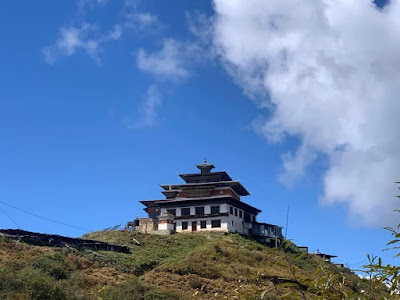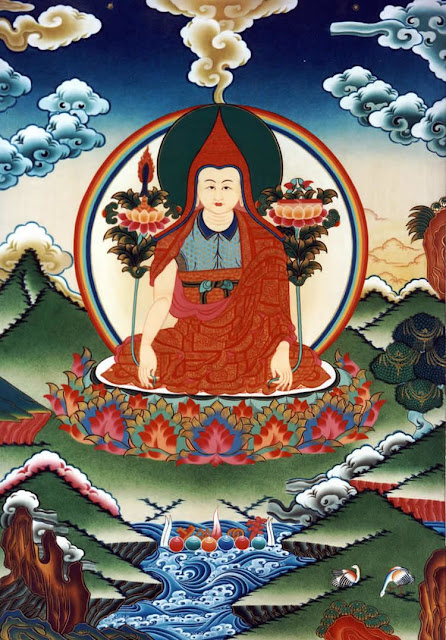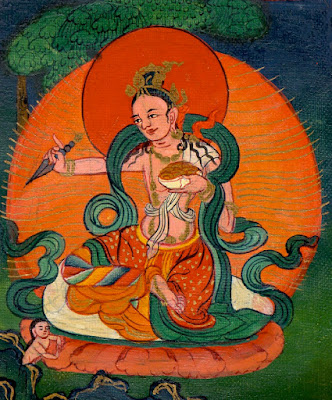Lungta generally referred as wind horse, is linked to one's fortune and luck, either at the time of birth or for a given year. It reflects our capacity to keep bad circumstances away. Lungta acts as coordinator and binder of all life forces. If one’s lungta is weak, one will be unfortunate and unlucky. One’s reputation may be at stake and it may be difficult to achieve anything. New projects such as starting a business will be unsuccessful.
The good thing is there is way to increase one’s lungtag. Our weak lungta can be strengthened by either hoisting Lungta flag or reciting lungta prayer.
This brief practice given below calls upon the goddess Tara and other
deities to grant their inspiration and blessings, so that the practitioner's
lifespan, merit, prosperity, renown, good fortune, magnetism (Wang tang) and 'windhorse'
(Lung ta) may all increase.
༄༅། །སྒྲོལ་མའི་རླུང་རྟ་བསྡུས་པ་བཞུགས།
Brief Windhorse
Practice of Tārā
by Patrul Rinpoche
བསླུ་མེད་མཆོག་གསུམ་སྤྱི་དང་རྗེ་བཙུན་མ། །
lumé chok sum chi
dang jetsünma
Through
the blessing and power of the unfailing Buddha, Dharma and Saṅgha, and of
Jetsünma,
རྒྱལ་ཡུམ་འཕགས་མ་སྒྲོལ་མའི་བྱིན་མཐུ་ཡིས། །
gyalyum pakma
drolmé jin tu yi
Mother of
the buddhas, Noble Tārā,
བདག་གི་ཚེ་བསོད་དཔལ་འབྱོར་སྙན་གྲགས་རྣམས། །
dak gi tsé sö
paljor nyendrak nam
May our
lifespan, merit, prosperity and renown
ཡར་ངོའི་ཟླ་དང་དབྱར་གྱི་མཚོ་བཞིན་དུ། །
yar ngö da dang yar
gyi tso shyindu
Increase
like a waxing moon, like a rising summer lake.
ཁྱད་པར་ཁ་རྗེ་དབང་ཐང་རླུང་རྟ་རྣམས། །
khyepar khajé
wangtang lungta nam
Especially
may our good fortune, wangtang and
windhorse
ཉམས་པ་གསོ་ཞིང་ཆད་མཐུད་འགྱེལ་བ་སློང་། །
nyampa so shying
chetü gyelwa long
Be healed
when they weaken, rejoined when interrupted, raised up when sinking down;
ཅི་བྱས་ལེགས་པའི་ལམ་དུ་འགྲོ་བ་དང༌། །
chi jé lekpé lam du
drowa dang
May
whatever we do turn out well,
ཚེ་རིང་ནད་མེད་བདེ་དང་ལྡན་གྱུར་ཅིག །
tsering nemé dé
dang den gyur chik
And may
long life, good health, peace and happiness be ours!
ཅེས་པའང་ཨ་བུའི་མིང་གིས་སོ། །
By the one called Abu.




































